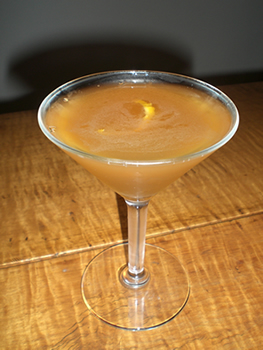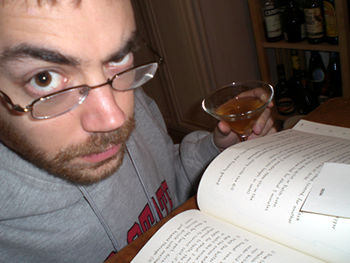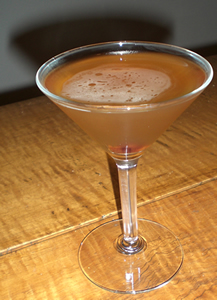The negroni is one of my all time favorite cocktails. Otherwise known as The Manliest Pink Drink, it draws its stunning color from the key ingredient of Campari. Now, Campari is a hell of a thing and perhaps not for the faint of heart. One of my friends in Columbus would try a sip of my negroni, and consistently pull a face and remark, “I think I just threw up in my mouth a little.” Consider yourself warned.
1 oz gin
1 oz Campari
1 oz sweet vermouth
Shake with ice and either strain into a cocktail glass (the tradition these days), or over a highball glass with two ice cubes. Garnish with an orange twist.
Depending on my mood, I often mix a classic one (in which case serve in a cocktail glass), but if I want something for relaxing while reading a book, I go for the recipe above and maybe add a couple of ice cubes. Some serve it over ice with a little soda water, and lots of folks add a slice of orange (half a wheel) and/or some orange bitters. Play around and find what you like!

Update: this picture is now in use by Wikipedia’s entry on the Negroni!
Oh, and that first taste? Yeah, you may (re: probably) won’t like it. Stick with it, you might just end up with a pink drink you can order with pride!




